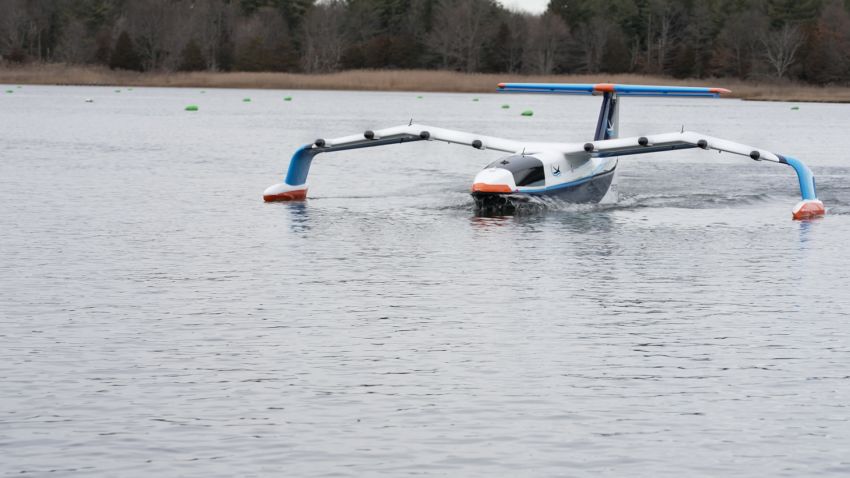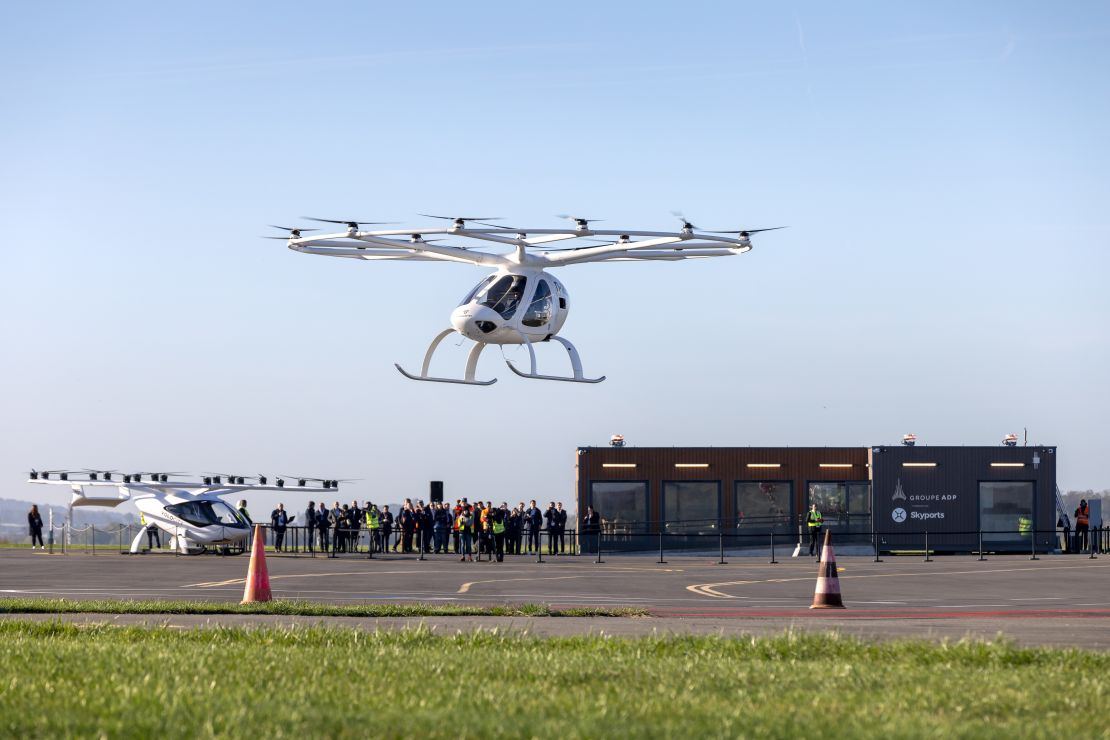[ad_1]
Detroit, Michigan
CNN
—
It’s the home of Henry Ford and the first moving assembly line, rightfully earning the nickname “Motor City.” Known the world over as a leader in transport innovation, Detroit, Michigan put the world on wheels, says Alisyn Malek, an urban mobility expert and a native of the metro area.
It’s these inventions of the past that could help inform the future, leading the way for new scalable and accessible modes of transit – ones that will look very different from what began rolling off Ford’s assembly lines more than a century ago.
Transportation is among the largest contributors of carbon production, responsible for about 37% of global greenhouse gas emissions. As urban planners look to the future, many are focused on sustainability, including a shift away from traditional gas-fueled vehicles.
As the managing director of Newlab Detroit, a global mobility innovation hub, Malek is part of a team that brings together different expertise with the aim of creating transportation solutions.
CNN recently spoke with Malek about what travel will look like by 2050.
The following interview has been edited for length and clarity.
CNN: What are some of the key pillars of mobility?
Malek: Some of the key pillars that are a really critical for that to be successful are accessibility. How easy are the mobility solutions to get to? How frequent are the services running? What areas are covered? Can people really get to where they need to go or have their goods brought to them easily? It’s really making sure that everybody has a couple of options. And as we look towards the future, we also need to think about sustainable transportation.
CNN: In 2050, how do you envision people getting from A to B?
Malek: As I think about 2050 and how we’ll get around, the thing that gets me most excited is really the variety of options that we’ll have at that time. People will still be biking, people will still take buses – but really, it’s about the ability to choose the best option for the trip that they needed to take.

When I think about 2050 and the types of technologies that might be brought to bear in transportation, I think we’re going to see iterations of things we’re already seeing today, like electrification. And I do think we’ll start to see other new technologies starting to make their way in. But what’s critical is that they find an opportunity that’s aligned with a business need.
CNN: We’re already seeing autonomous vehicles being tested in parts of the world today. Where do you see this technology in 2050?
Malek: A lot of what we hear about in the news today in terms of autonomous cars is a system that’s mostly able to drive itself. It uses sensors to see around the vehicle and then it has special computers on board to be able to take in basic map information and figure out how it should get from point A to point B. Those technologies are in testing and development, and I think it’s very exciting to see the progress.
But as we look towards 2050, I think where we’re really going to see this technology take off is in the commercial space, where you have shorter trips. When we think about being able to drive in every city, every dirt road, every country highway – that’s a lot to try to validate for. And so when we think about where these options can scale first, it’s going to be in these simpler areas. In some cities it might look like transportation from an airport to a downtown, so your next taxi or Lyft ride could be autonomous.
CNN: What is your impression of eVTOL (electric vertical take-off and landing) aircraft or air taxis?
Malek: The technology’s absolutely there. It works. We need to make sure it’s safe and verified and really has been validated in the same ways that airplanes are. When you think about passenger transportation in new forms, there’s a much higher bar in terms of safety that needs to be met. And that is some of the work that’s being done right now. But I think over the next 20 years we’ll be seeing more eVTOL use in the movement of goods.

CNN: Will we see a hyperloop network (high-speed pods that travel in tubes) up and running by 2050?
Malek: Hyperloop as a technology is very interesting. The idea is that you’re cutting down on things like drag and friction to move efficiently. When you think about bringing hyperloop into reality, you have to start thinking about how to build out that infrastructure, how to make it accessible, how to match it with a business case and how to make sure that it’s resilient to changes. And so as we look at the future opportunity for hyperloop, it’s not, ‘is the technology ready?’ I’d say it’s there. It’s really about if the infrastructure is ready and how we adopt and deploy it.
CNN: Do you think supersonic air travel will return to the skies?
Malek: So we’ve seen supersonic planes in the past and I do think we’ll see supersonic planes in the future. As we think about advances and also the increases in global travel, I do think there’s demand. What’s changed from the 2000s when we saw this previously is a push towards sustainability. So now it’s no longer just a question of will we see supersonic planes, but will they be fueled by net zero carbon fuels? And I think that that really needs to be a critical part of the conversation as we look towards that opportunity in the future.
When we think about short term flights that are only over land, usually you’re not going to use a supersonic jet because you’ll impact a lot of the people below the plane with the boom, so it’s going to be a lot of crossing ocean type of flights. And then when you’re crossing land, either moving people to rail like we’re seeing happen in France or helping people find electric connector options – maybe it’s eVTOL, maybe it’s an electric regional airplane – but really looking at a variety of options to help connect to that final destination.
CNN: What are your hopes for the future of transportation?
Malek: When I think about my hopes and dreams for the future of transportation, it’s really that we focus on the broadest sense of what do we, as people, need from our transportation systems, and start with that as our organizing principle. Historically, we’ve started with ‘what do cars need, what do planes need?’ But planes and cars are here just for us.
And as I look to the future, it’s not necessarily one technology, but really this philosophy: how we use different solutions that are the right size for the type of job that they’re trying to serve.
[ad_2]
